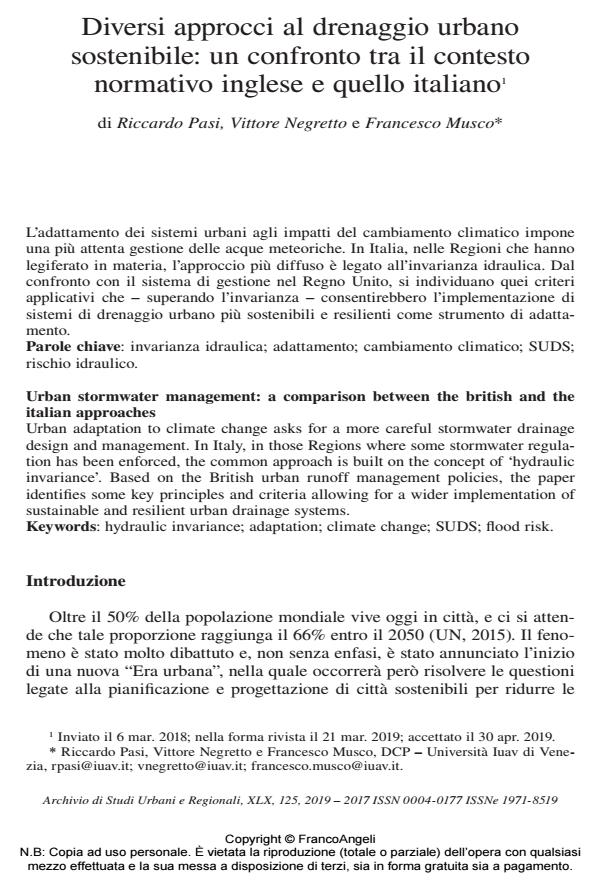Urban stormwater management: a comparison between the british and the italian approaches
Journal title ARCHIVIO DI STUDI URBANI E REGIONALI
Author/s Riccardo Pasi, Vittore Negretto, Francesco Musco
Publishing Year 2019 Issue 2019/125
Language Italian Pages 21 P. 120-140 File size 186 KB
DOI 10.3280/ASUR2019-125006
DOI is like a bar code for intellectual property: to have more infomation
click here
Below, you can see the article first page
If you want to buy this article in PDF format, you can do it, following the instructions to buy download credits

FrancoAngeli is member of Publishers International Linking Association, Inc (PILA), a not-for-profit association which run the CrossRef service enabling links to and from online scholarly content.
Urban adaptation to climate change asks for a more careful stormwater drainage design and management. In Italy, in those Regions where some stormwater regulation has been enforced, the common approach is built on the concept of ‘hydraulic invariance’. Based on the British urban runoff management policies, the paper identifies some key principles and criteria allowing for a wider implementation of sustainable and resilient urban drainage systems.
Keywords: Hydraulic invariance; adaptation; climate change; SUDS; flood risk
- Climate Change Adaptation, Flood Risk, and Beyond Vittore Negretto, pp.183 (ISBN:978-3-031-65462-6)
- Are we ready for “No net land take by 2050”? A perspective from Italy Lucia Saganeiti, in City, Territory and Architecture 11/2025
DOI: 10.1186/s40410-025-00262-y - Selected Articles from the International Conference on Designing in Disorder Vito Garramone, Carlo Dall’Omo, Vittore Negretto, Francesco Musco, pp.17 (ISBN:978-981-96-7873-0)
Riccardo Pasi, Vittore Negretto, Francesco Musco, Diversi approcci al drenaggio urbano sostenibile: un confronto tra il contesto normativo inglese e quello italiano in "ARCHIVIO DI STUDI URBANI E REGIONALI" 125/2019, pp 120-140, DOI: 10.3280/ASUR2019-125006